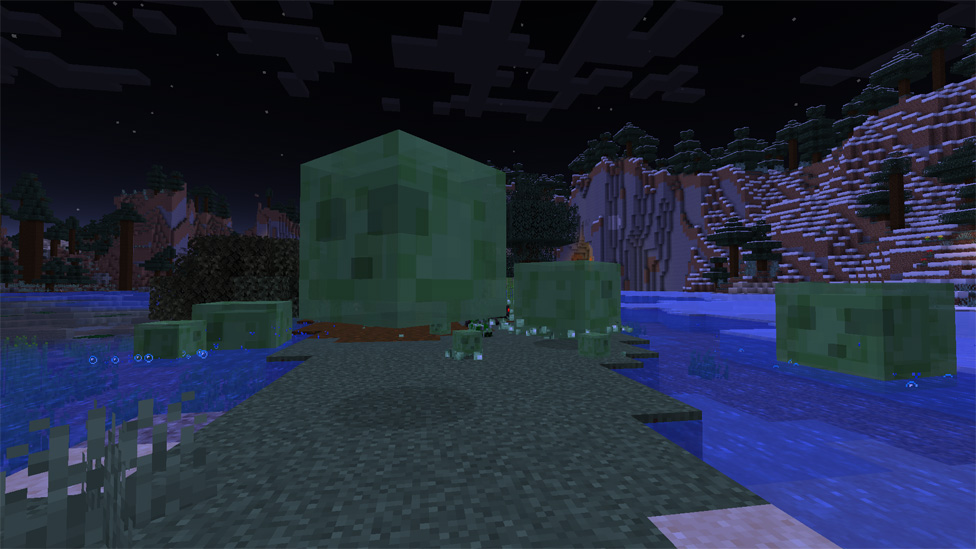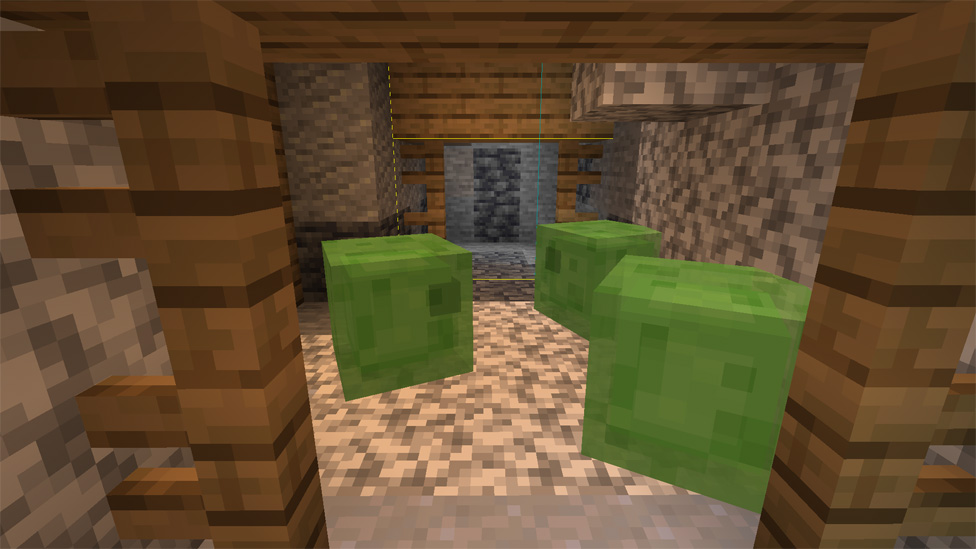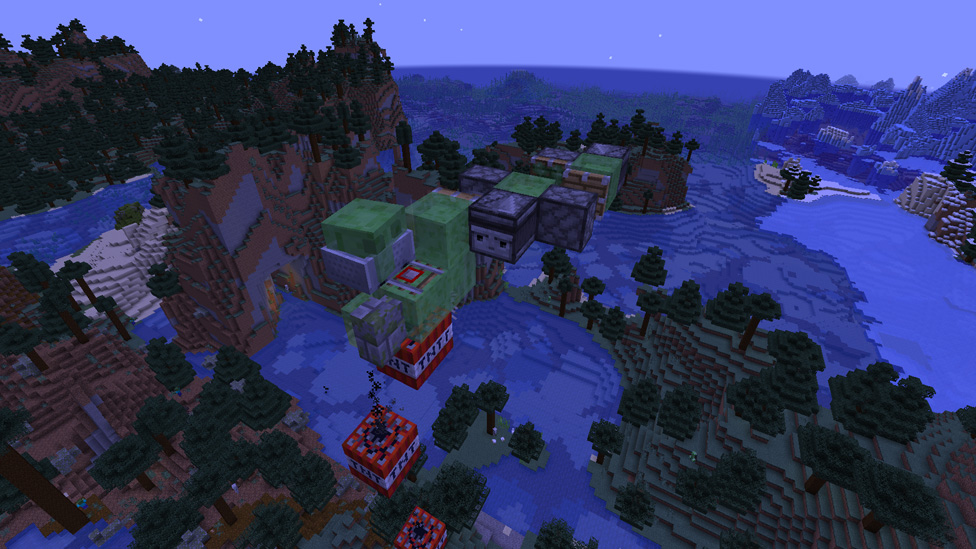Slimes in Minecraft
Make Your Own Minecraft Server For Free
Your own Minecraft server is only 5 minutes away! We support simple one click install for over 1000 unique modpacks.
Free Minecraft Server Hosting

The Evolution of Minecraft Slimes
The slime's journey in Minecraft is a tale of simplicity and consistency. Originally introduced with a basic, almost primitive design, these green, semi-transparent cubes have undergone minimal changes over the years. Initially sporting black eyes and mouths, they later embraced a more harmonious look with dark green facial features. But it’s not just their appearance that has captivated players; it’s their unique behavior and role within the game. Spawning Secrets: Full Moon and Swamp Biomes
Understanding the spawning patterns of Minecraft slimes is crucial for players looking to harness their resources. One of the most fascinating aspects of these gelatinous creatures is their affinity for the full moon. The lunar cycle in Minecraft, much like in the real world, influences various aspects of the game, and slimes are no exception. During a full moon, players have a higher chance of encountering these bouncy mobs, especially in swamp biomes.When it comes to swamp biomes, these wet and gloomy areas are like a dream come true for slime spawning. The special mix of water, plants, and dim lighting in swamps creates the ideal home for slimes, making these biomes a must-see for slime hunters. Just remember, slimes show up more often at night, and their population skyrockets during a full moon. It's an intriguing dance between the game's environment and the mechanics of mob spawning.
The Mystery of Slime Chunks
Minecraft is all about exploring and finding new things, and this includes the mysterious slime chunks. These special 16x16 block areas in the game world are where slimes can appear underground, no matter what kind of biome is above them. Identifying these chunks can be a game-changer for players seeking to farm slimes efficiently.The challenge lies in the fact that slime chunks are randomly distributed and make up roughly 10% of all chunks in a Minecraft world. Many players turn to external tools and apps, like Chunk Base, to locate these precious areas. Once identified, setting up a slime farm in these chunks can provide a steady supply of slimeballs, crucial for various crafting recipes.
Slimes and Elevation
While the moon and biome are important, elevation plays a crucial role in slime spawning. In the world of Minecraft, slimes have a unique spawning rule: they appear at lower elevations but with specific conditions. Outside swamp biomes, slimes spawn only below a certain level, making the underground layers of the game a hotbed for slime hunting.
The magic number here is Y:40. Below this level, your chances of encountering slimes increase significantly. This means delving into the depths of Minecraft's caves and dungeons is not just an adventure—it's a strategic quest for slimes. Mining operations and exploration in these depths often lead to unexpected encounters with these squishy mobs, turning every underground expedition into a potential slime-hunting adventure.
Unique Abilities of Slimes
Minecraft slimes aren't your average passive mobs; they possess special abilities that make them stand out. Unlike other hostile mobs that can be easily avoided by climbing or closing doors, slimes show a surprising level of persistence. They can follow players up ladders and scaffolding, making them a quirky challenge in both survival and creative modes.This ability not only adds a layer of excitement and unpredictability to encounters with slimes but also requires players to think creatively about their defense strategies. Don't ever underestimate these seemingly simple creatures, whether you're constructing a slime farm or just venturing out on an exploration.
Alternate Sources for Slimeballs: Pandas and Traders
While hunting slimes is a common method to acquire slimeballs, Minecraft offers alternative, more peaceful ways. A lesser-known method involves pandas, those adorable creatures found in jungle biomes. When bred, baby pandas have a chance of sneezing out slimeballs, providing a unique, albeit niche, method of farming this resource.For those who prefer trading over farming, the Wandering Trader provides another option. This nomadic merchant, accompanied by llamas and dressed in blue, spawns every few hours of gameplay. His inventory varies, but occasionally, he stocks slimeballs for trade, offering a convenient way to acquire this resource without the slime hunt.
Crafting with Slimeballs: Essential Recipes
Slimeballs are not just a trophy from a successful slime hunt; they are a valuable component in several essential Minecraft recipes. One of the most popular uses is in crafting sticky pistons. These modified pistons can move blocks, playing a crucial role in creating complex machinery and traps in the game.
Another vital use of slimeballs is in making magma cream. This item is indispensable for brewing Fire Resistance potions, essential for navigating the perilous Nether. Lastly, slimeballs are used to craft leads, useful for leashing and moving various mobs like cows, horses, and llamas.
These varied uses underscore the importance of slimeballs in the Minecraft crafting system, making slimes a mob worth seeking out for both practical and creative gameplay enhancements.
Final thoughts
In the vibrant world of Minecraft, slimes are not just squishy green blobs for amusement; they're key players in the crafting and survival saga. If you're busy running a slime farm, trying out slimeballs in your newest crafting project, or simply enjoying the sight of them hopping around, these unique creatures add a touch of excitement and usefulness to your Minecraft journeys. If you are looking to elevate your game, consider getting a server with Minecraft hosting from Scalacube.FAQs
What does the design evolution of Minecraft slimes signify?
The minimal design changes in Minecraft slimes highlight the game's focus on functional simplicity, ensuring that even the most basic mobs retain a sense of charm and playability.
How does the moon cycle affect slime spawning in Minecraft?
The moon cycle in Minecraft directly influences slime spawning, with the full moon phase significantly increasing their spawn rate in swamp biomes.
What strategies can players use to find slime chunks?
Players often use external tools like Chunk Base or in-game strategies, such as mining and observing slime spawning patterns, to identify slime chunks in Minecraft.
Why is elevation crucial for finding slimes in Minecraft?
Elevation is key because slimes spawn below Y:40 in non-swamp biomes, making lower underground levels prime locations for slime encounters.
Make Your Own Minecraft Server For Free
Your own Minecraft server is only 5 minutes away! We support simple one click install for over 1000 unique modpacks.
Start Your Server For Free!
Copyright 2019-2025 © ScalaCube - All Rights Reserved.